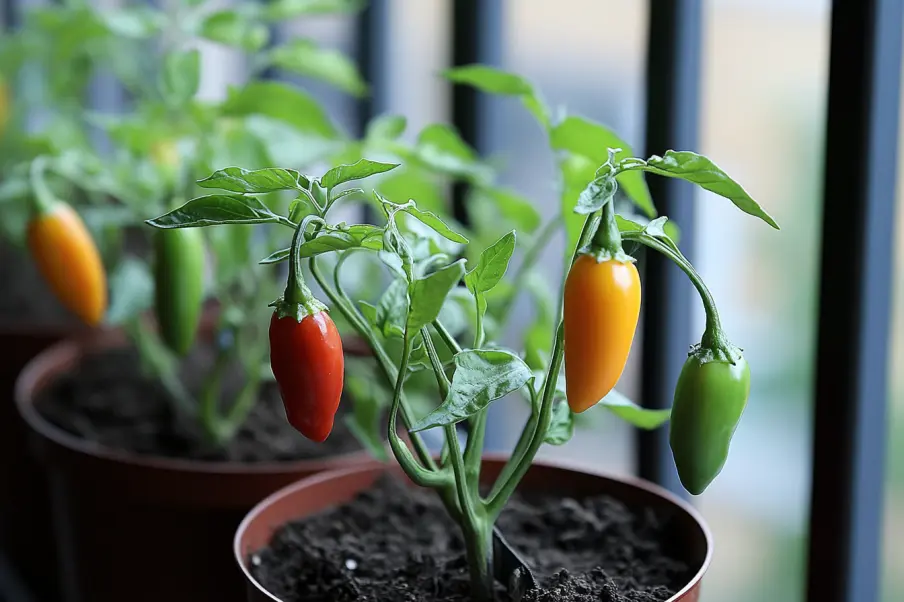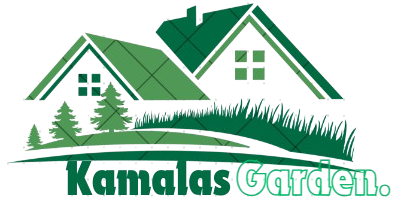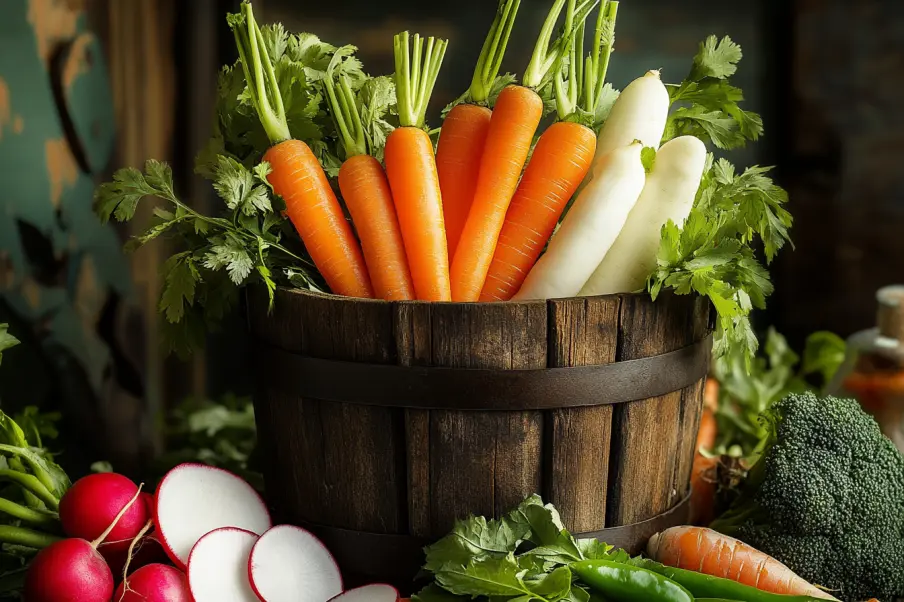Introduction
Growing fresh produce at home has never been easier with Best Vegetables to Grow in Containers. Whether you have a small backyard, a balcony, or a patio, container gardening allows you to cultivate a variety of vegetables in a space-efficient and convenient way. By selecting the right containers and understanding the best practices for soil, watering, and plant care, you can enjoy homegrown vegetables year-round. This guide will help you choose the best vegetables to grow in containers and provide essential tips to ensure a thriving garden.
Why Grow Vegetables in Containers?
Benefits of Container Gardening
Growing vegetables in containers is an excellent way to cultivate fresh produce without requiring a traditional garden space. Whether you have a small backyard, a balcony, or a patio, container gardening allows you to enjoy homegrown vegetables conveniently.
Space-Saving & Accessibility
Container gardening is perfect for those with limited space. You can maximize your growing area by using buckets, grow bags, hanging baskets, or window boxes. This method also makes it easier to manage pests, weeds, and soil conditions while keeping your plants accessible for harvesting and care.
Mobility & Flexibility
One of the best aspects of container gardening is its mobility. You can move your plants to optimize sunlight exposure, protect them from harsh weather conditions, or even bring them indoors when necessary.
Choosing the Right Containers

Buckets (5-Gallon, 10-Gallon)
Buckets are among the most popular choices for container gardening. A 5-gallon bucket provides ample space for deep-rooted vegetables, while 10-gallon buckets offer even more room for larger plants. Ensure they have drainage holes at the bottom to prevent root rot.
Grow Bags & Fabric Pots
Grow bags and fabric pots are excellent alternatives to traditional plastic or ceramic pots. They provide better aeration, improved drainage, and prevent root-bound conditions. These bags are especially beneficial for root vegetables and plants that require well-draining soil.
Hanging Baskets & Window Boxes
Hanging baskets and window boxes are great for growing trailing plants, leafy greens, and herbs. They make use of vertical space efficiently and add aesthetic appeal to your gardening setup.
Raised Planter Boxes & Pallet Gardens
Raised planters and pallet gardens are practical options for those who want a structured and organized gardening space. They offer better soil control, reduce strain on your back, and keep pests at bay.
Best Vegetables to Grow in Buckets & Containers
1. Tomatoes
Tomatoes are one of the most rewarding vegetables to grow in containers. Choose compact or determinate varieties, and provide a sturdy cage or stake for support. Use a well-draining soil mix rich in organic matter.
2. Peppers (Bell & Chili)
Peppers thrive in buckets and require warm temperatures. Ensure they receive at least 6-8 hours of sunlight daily and use a balanced fertilizer to promote growth and fruiting.
3. Carrots
Carrots grow well in deep containers with loose, sandy soil. Choose shorter varieties like ‘Parisian’ or ‘Thumbelina’ if using shallow pots.
4. Lettuce & Leafy Greens
Lettuce and leafy greens are perfect for container gardening as they have shallow roots. They grow well in window boxes, grow bags, and even hanging baskets.
5. Beans (Snap & Bush)
Bush beans are ideal for small containers, while pole beans require vertical support. Beans are nitrogen-fixing plants that enrich the soil.
6. Cucumbers
Cucumbers grow well in buckets with a trellis for support. Choose compact or bush varieties for smaller spaces.
7. Eggplant
Eggplants need deep containers and warm temperatures. Use a 5-gallon bucket for best results and ensure consistent watering.
8. Radishes
Radishes are quick-growing and do well in shallow containers. They require minimal care and are perfect for beginner gardeners.
9. Onions & Green Onions
Onions can be grown in wide, shallow pots, while green onions thrive in window boxes or grow bags. They require well-drained soil and regular watering.
10. Potatoes (Bucket-Grown)
Potatoes thrive in deep buckets or grow bags. Layer the soil as the plant grows to encourage tuber formation.
11. Zucchini & Summer Squash
Zucchini and squash require a larger container (at least 10 gallons). They benefit from frequent watering and good air circulation.
12. Kale & Brassicas
Kale, broccoli, and cabbage do well in containers. They require rich, well-draining soil and moderate sun exposure.
Read More: 12 Vegetables You Should Be Growing in Buckets
Vegetables to Grow in Grow Bags & Fabric Pots
Advantages of Grow Bags
Grow bags promote healthier root growth by preventing root circling and providing better aeration. They also help regulate moisture levels effectively.
Best Vegetables for Grow Bags
Some of the best vegetables for grow bags include potatoes, carrots, tomatoes, peppers, lettuce, and herbs. These bags are especially beneficial for root vegetables due to their excellent drainage properties.
Small Space Gardening: Hanging Baskets & Window Boxes
Best Vegetables for Hanging Baskets
Cherry tomatoes, strawberries, lettuce, and trailing herbs like oregano and thyme thrive in hanging baskets.
Growing Leafy Greens & Herbs in Window Boxes
Lettuce, spinach, basil, and chives grow well in window boxes, making them perfect for small urban gardens.
Vertical Gardening for Small Planters
Trellises, Stakes, and Cages
Using trellises, stakes, and cages can help maximize vertical space, support climbing plants, and improve air circulation.
Best Vining Vegetables for Vertical Space
Cucumbers, pole beans, peas, and indeterminate tomatoes are great candidates for vertical gardening.
Soil & Fertilization for Container Gardening
Best Soil Mix for Container-Grown Vegetables
A high-quality potting mix with compost, peat moss, and perlite ensures healthy root development and good drainage.
Organic vs. Synthetic Fertilizers
Organic fertilizers, such as compost tea and fish emulsion, improve soil health over time, while synthetic fertilizers provide quick nutrient boosts.
Composting in Small Spaces
Using small compost bins or vermicomposting systems can provide a steady supply of organic matter for container gardening.
Watering & Drainage Tips
Best Watering Techniques
Water deeply but infrequently to encourage deep root growth. Use mulch to retain moisture and reduce evaporation.
Self-Watering Planters & Irrigation Hacks
Self-watering containers help regulate moisture levels and reduce watering frequency. Drip irrigation systems are also effective for maintaining consistent hydration.
Common Mistakes to Avoid in Container Gardening
Overcrowding Plants
Planting too many vegetables in a single container leads to poor air circulation and competition for nutrients.
Poor Drainage Issues
Ensure all containers have drainage holes to prevent root rot and waterlogging.
Neglecting Sunlight & Positioning
Place your containers in locations where they receive adequate sunlight, as most vegetables need at least 6 hours of direct sunlight daily.
External Resource: 10 Vegetables to Grow in Buckets, Bags, or Baskets
Bonus: Fruits That Can Be Grown in Containers
1. Strawberries
Strawberries grow well in hanging baskets, grow bags, and window boxes.
2. Blueberries
Blueberries thrive in acidic soil and do well in large containers with good drainage.
3. Raspberries
Compact raspberry varieties can be grown in large pots and require trellising.
4. Citrus (Lemon, Lime, Orange)
Dwarf citrus trees thrive in large containers and need full sun exposure.
5. Dwarf Banana Trees
Dwarf banana trees can be grown indoors or on patios with sufficient warmth and light.
Final Thoughts: Start Your Container Garden Today!
Container gardening is an accessible and rewarding way to grow fresh vegetables, even in small spaces. Start with easy-to-grow vegetables and gradually expand your setup.
What are you growing in containers this season? Share your experience in the comments below!

